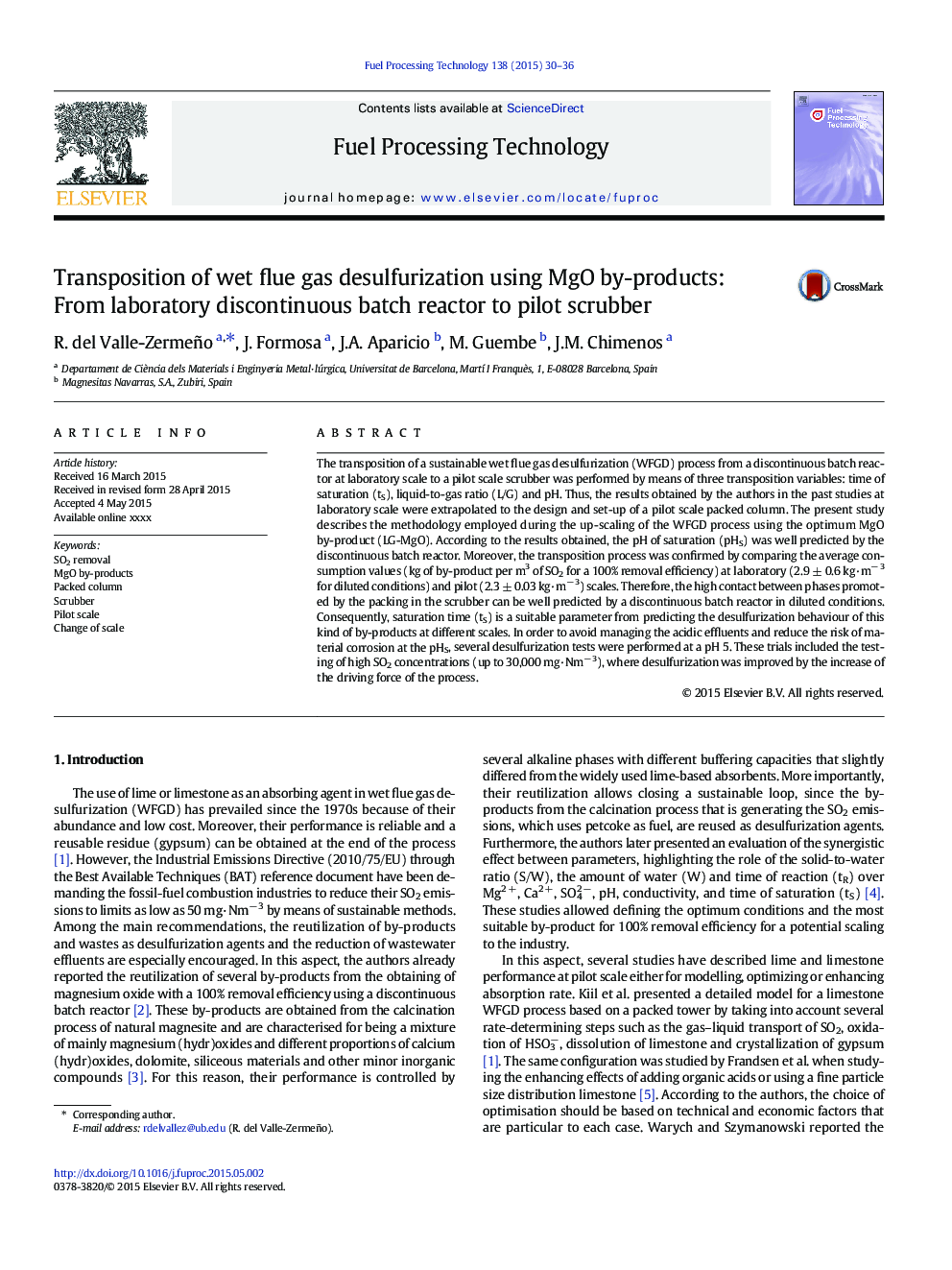| Article ID | Journal | Published Year | Pages | File Type |
|---|---|---|---|---|
| 6656773 | Fuel Processing Technology | 2015 | 7 Pages |
Abstract
The transposition of a sustainable wet flue gas desulfurization (WFGD) process from a discontinuous batch reactor at laboratory scale to a pilot scale scrubber was performed by means of three transposition variables: time of saturation (tS), liquid-to-gas ratio (L/G) and pH. Thus, the results obtained by the authors in the past studies at laboratory scale were extrapolated to the design and set-up of a pilot scale packed column. The present study describes the methodology employed during the up-scaling of the WFGD process using the optimum MgO by-product (LG-MgO). According to the results obtained, the pH of saturation (pHS) was well predicted by the discontinuous batch reactor. Moreover, the transposition process was confirmed by comparing the average consumption values (kg of by-product per m3 of SO2 for a 100% removal efficiency) at laboratory (2.9 ± 0.6 kg·mâ 3 for diluted conditions) and pilot (2.3 ± 0.03 kg·mâ 3) scales. Therefore, the high contact between phases promoted by the packing in the scrubber can be well predicted by a discontinuous batch reactor in diluted conditions. Consequently, saturation time (tS) is a suitable parameter from predicting the desulfurization behaviour of this kind of by-products at different scales. In order to avoid managing the acidic effluents and reduce the risk of material corrosion at the pHS, several desulfurization tests were performed at a pH 5. These trials included the testing of high SO2 concentrations (up to 30,000 mg·Nmâ 3), where desulfurization was improved by the increase of the driving force of the process.
Related Topics
Physical Sciences and Engineering
Chemical Engineering
Chemical Engineering (General)
Authors
R. del Valle-Zermeño, J. Formosa, J.A. Aparicio, M. Guembe, J.M. Chimenos,
